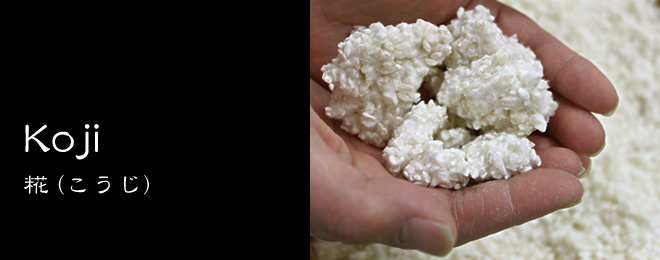
Koji
the key microorganism in Japanese traditional foods
Koji is steamed rice that has been innoculated with koji spores (Aspergillus oryzae) and incubated to allow the fungus to grow. Rich in enzymes, koji is the key ingredient in all the basic foods of the traditional Japanese diet. It is used as a starter to make miso, soy sauce, sake, shochu, mirin and vinegar.
When koji is used in food preparation, the enzyme proteases breaks down proteins to produce amino acids including glutamate. This amino acid is responsible for umami, a rich, savory flavor that makes food taste delicious. The taste of umami combined with other tastes rounds out the flavor of any dish.
Another enzyme amylase breaks down starches to produce simple sugars such as glucose when making amazaké. When koji is combined with saké yeast, the glucose in the koji works in the production of alcohol to produce saké. When sake is combined with vinegar starter, the result is rice vinegar.
Koji (A. oryzae) has been designated as the National Fungus of Japan (kokkin) by the Brewing Society of Japan because of its importance in Japanese food culture.
Using Koji
Koji is the essential ingredient used in many Japanese fermented foods, such as miso, soy sauce and amazaké. It can also be used to make pickled vegetables. Another popular use of koji is shio-koji, an umami-rich sauce that can be used in place of salt.
Amazaké, miso, and shio-koji can be made at can be made at home or purchased.
To read more about koji: Koji, an Aspergillus The Tokyo Foundation

